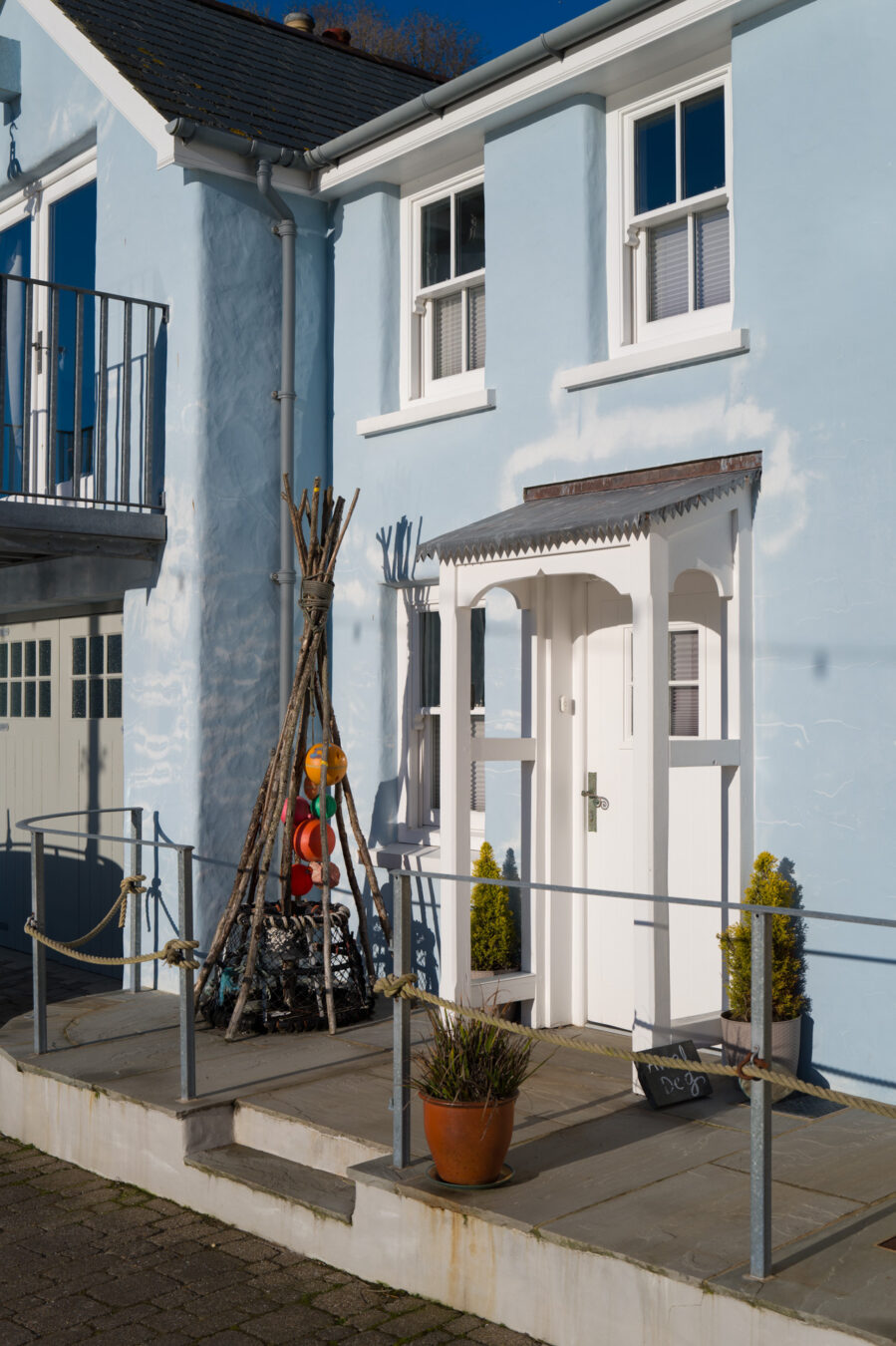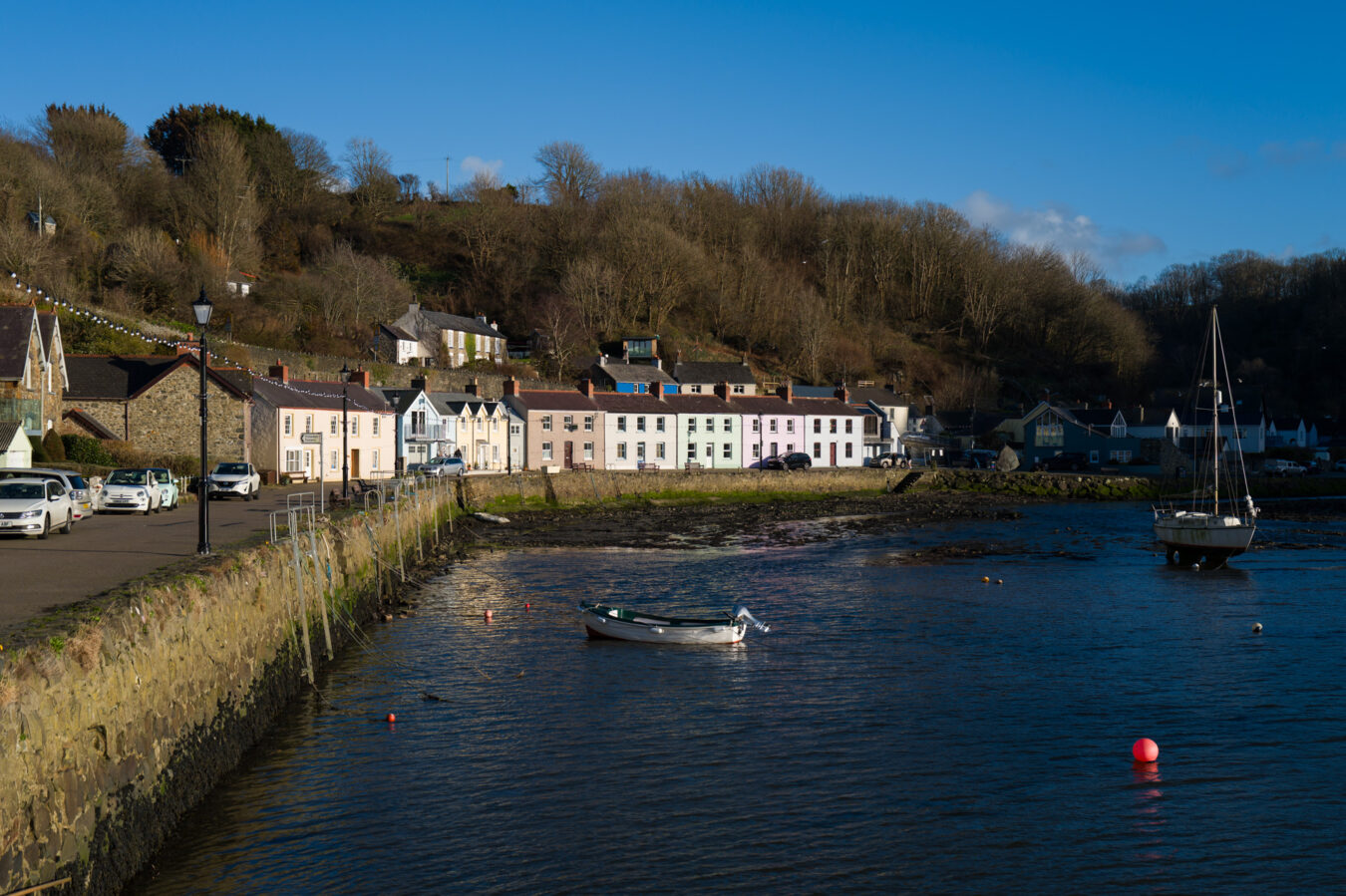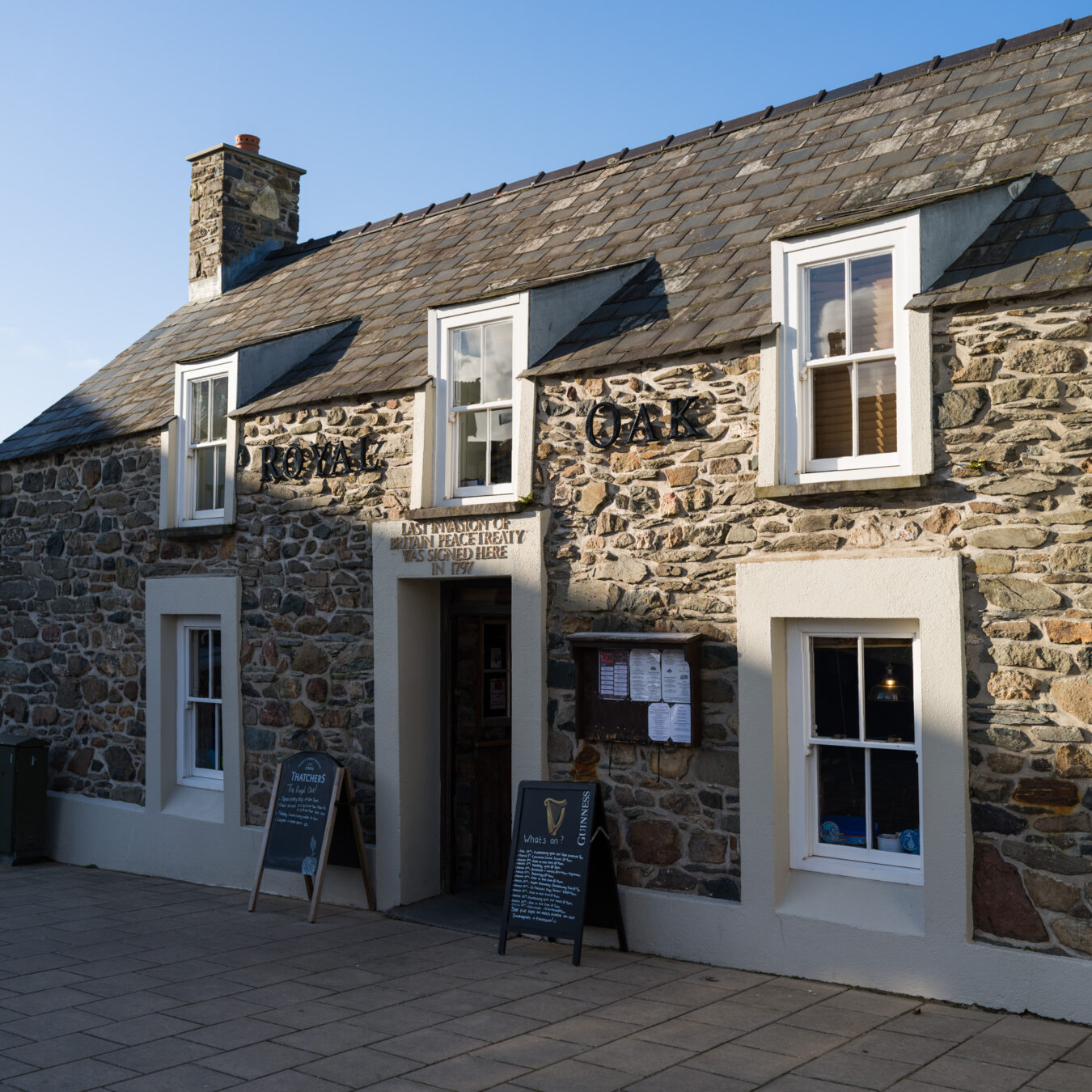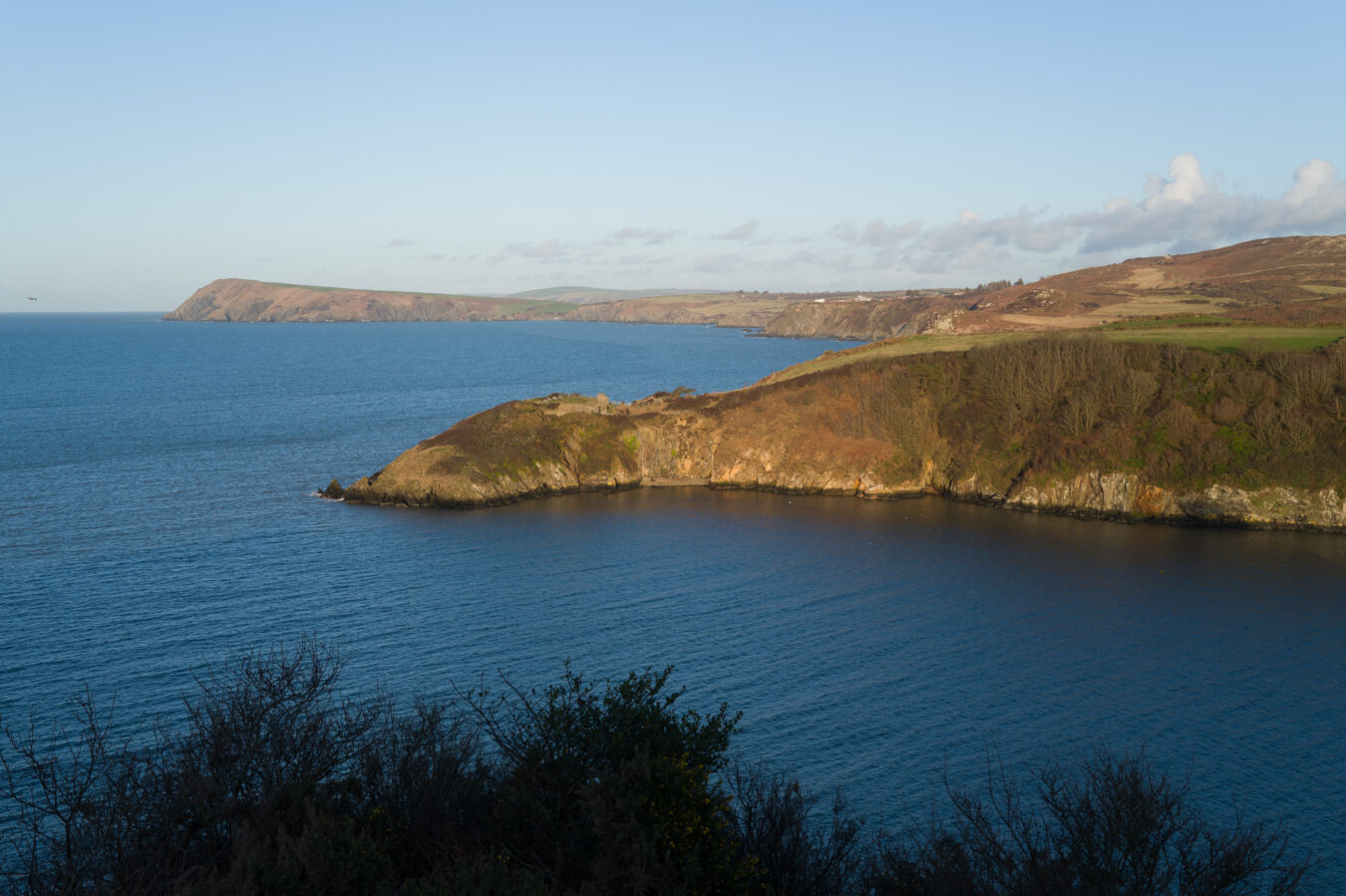Fishguard is one of those places you wouldn’t put at the top of your list when visiting the country for the first time, but it’s a place you’ll love to discover on a second trip to the southern part of Wales. This coastal town in North Pembrokeshire has plenty of atmosphere and is one of the most peaceful locations I’ve visited, which makes its historic defence all the more fascinating to learn about.
Fishguard is divided in two: the picturesque Lower Town, with its historic harbour, and the more modern Upper Town, which offers more amenities and attractions. It also wraps around Fishguard Bay, together with its twin town, Goodwick.
There’s plenty to do here: walking along the harbour and coastal path, exploring historical sites, and watching the changing light over the bay are just a few ideas. It’s also a well-connected area, with ferry services to Ireland and a train station that can take you all the way to Manchester. But the best part of Fishguard is that it isn’t as touristy as some other places in Pembrokeshire, which means you can find quiet spots and uncover the many stories the place has to offer.

Things to See and Do in Fishguard
When I first visited, I started by walking down to the Lower Town, which is the original hamlet from which the modern town grew. It lies in a deep valley where the Afon Gwaun meets the sea.
The Lower Town is a pure delight: a picturesque fishing village made up of pastel coloured houses dotted along a serene harbour with small fishing boats. There are a couple of historic pubs and a café — and not much else. But the beauty of it lies in how calm and relaxing the place is.



If you’re after more amenities and a bit more urban dynamism, you only need to take a short walk back up the hill to the upper, more modern part of the town, which has a wider selection of shops, cafés, and restaurants — and even an independent cinema, Theatre Gwaun. You’ll also find a vibrant music scene, with events such as the AberJazz Festival and the Fishguard International Music Festival.

One of the most important moments in Fishguard’s history is its role in the Last Invasion of Britain in 1797, when French forces attempted a landing here. You can visit historic defence points such as the partially restored Fishguard Fort with its cannons and old storehouse, where you’ll also be rewarded with sweeping views of the sea.

The Last Invasion Tapestry Gallery, housed in Fishguard Town Hall, displays a 100 feet (30-metre) embroidered tapestry that brings those tense days to life, along with artefacts and storyboards. And be sure to stop at the Royal Oak pub, where the peace treaty was signed. The pub has a wonderful atmosphere, and I had an excellent meal there.

quick facts about fishguard
- Fishguard’s Welsh name is Abergwaun, which means “mouth of the River Gwaun”.
- Fishguard Fort was built in 1781, following threats from privateers and foreign raiders.
- In 1797, Fishguard became the scene of the Last Invasion of Britain, also known as the Battle of Fishguard.
- A force of around 1,400 soldiers from Revolutionary France landed near Fishguard Bay but, due to poor coordination, lack of discipline, desertion, and local resistance, they surrendered soon afterwards.
- Approximately 500 reservists, militia, and sailors achieved a successful defence, with help from local civilians who armed and organised themselves.
- The brief campaign lasted only three days, from 22 to 24 February 1797.
There are several scenic walks along the coastline — part of the Wales Coast Path — offering stunning views of the Lower Town from above and leading to the far side of Fishguard Bay, where you can watch ferries arrive and depart. The clifftop path, also known as the Marine Walk, takes you past rugged coastline and coastal vegetation, and it is especially beautiful at sunset or in the early morning.


Last but not least, consider Fishguard a great base from which to explore popular landmarks in Pembrokeshire and beyond. Many must-see locations are only half an hour to an hour’s drive away, including St Davids, as well as destinations further north such as Cardigan, and idyllic beaches like Mwnt.
Best Time to Visit Fishguard
Fishguard is one of those towns you can visit all year round, really. The usual limitations apply in the off-season — some places may have shorter opening hours, and a few cafés might be closed — but the main attraction of this place, its tranquil atmosphere, is there in all four seasons.
Summer tends to be a bit busier, though never as crowded as some of the more popular spots in Pembrokeshire. It is also the time of year when the two music festivals take place: the Fishguard International Music Festival in July and the AberJazz Festival in August.
Useful Information When Visiting Fishguard
See Fishguard on
Google Maps | Apple Maps
Public transport: Fishguard has its own railway station — Fishguard & Goodwick — served by the Marches Line, with services to Haverfordwest, Carmarthen, Swansea, Cardiff, and even direct trains all the way up to Manchester. Ferries also sail from Fishguard Harbour to Rosslare, Ireland. The T5 bus connects the town with Aberystwyth, while the T11 takes you to St Davids. Read more about Public Transport in Wales.
Car parks: There are several pay-and-display car parks in the modern Upper Town, and one in the Lower Town.
EV charging stations: You’ll find 22 kW slow chargers in Fishguard (West Street Car Park and Leisure Centre Car Park) and faster ones in Goodwick (Sands Car Park), all managed by Dragon Charging.
Public toilets: Public toilets are available in both Upper and Lower Town, as well as in Goodwick.
Find out more about the Fishguard International Music Festival on the official website.
You can read more about the Aber Jazz Festival on the main website.

